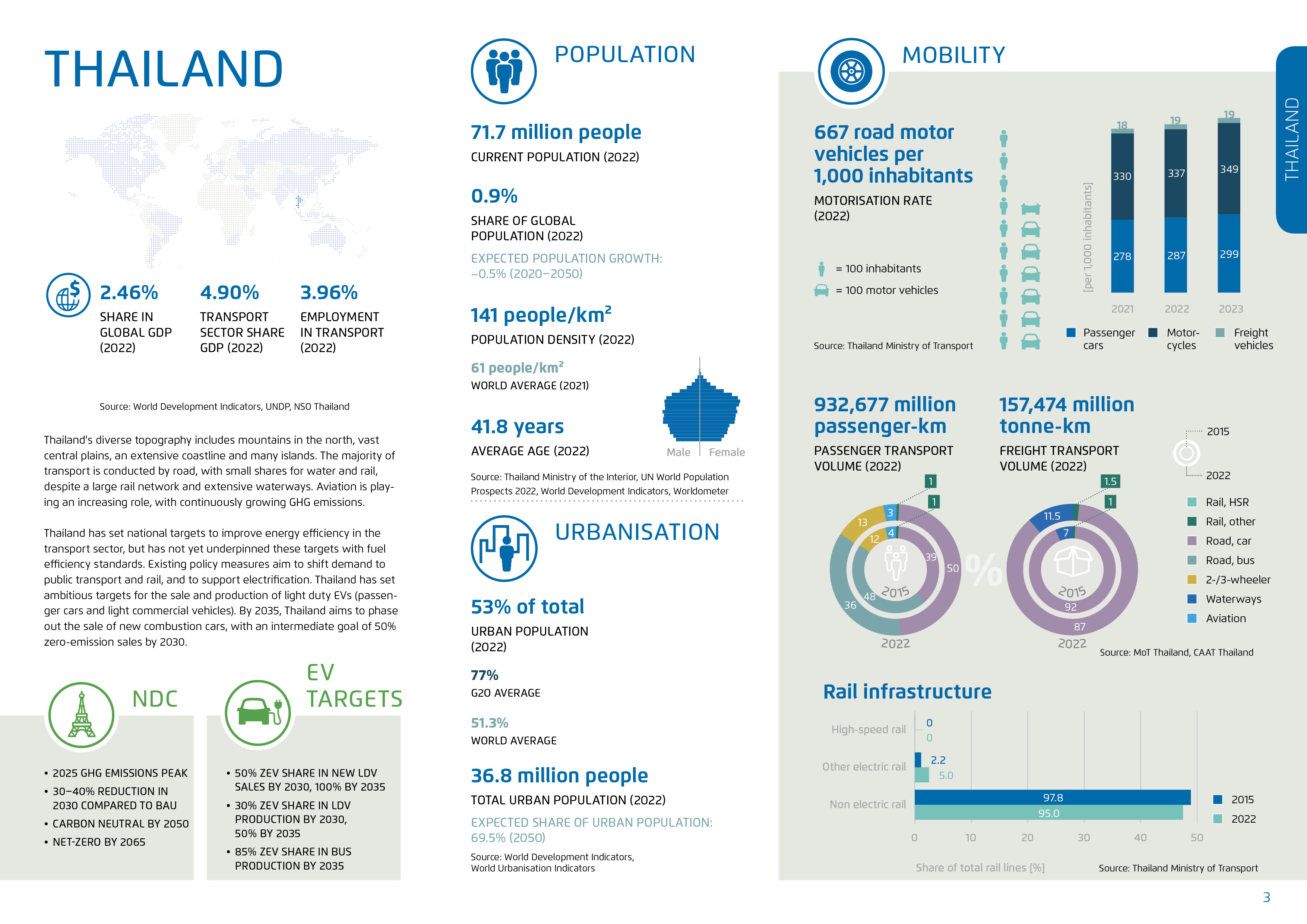Thailand
Net-zero target: 2065 / Motorisation rate (2020): 667 vehicles per 1,000 inhabitants / Change in transport sector emissions (1990-2019): 310.3% / Projected total CO2 emissions per capita in the transport sector in 2030: 1.26 t
Thailand's diverse topography includes mountains in the north, vast central plains, an extensive coastline and many islands. The majority of transport is conducted by road, with small shares for water and rail, despite a large rail network and extensive waterways. Aviation is playing an increasing role, with continuously growing GHG emissions.
Thailand has set national targets to improve energy efficiency in the transport sector, but has not yet underpinned these targets with fuel efficiency standards. Existing policy measures aim to shift demand to public transport and rail, and to support electrification. Thailand has set ambitious targets for the sale and production of light duty EVs (passenger cars and light commercial vehicles). By 2035, Thailand aims to phase out the sale of new combustion cars, with an intermediate goal of 50% zero-emission sales by 2030.
Key figures on transport and climate
Published in Towards Decarbonising Transport Thailand 2024.










